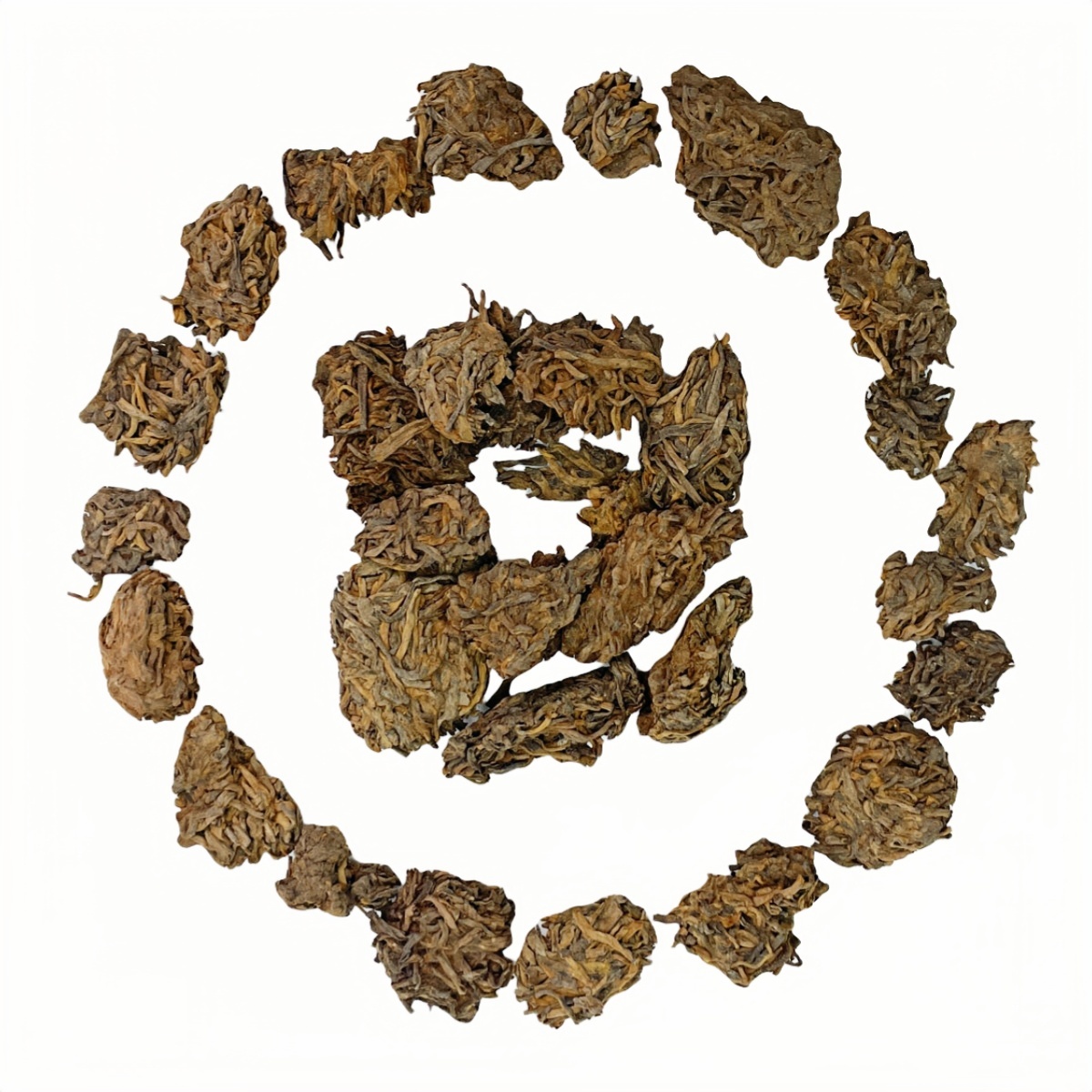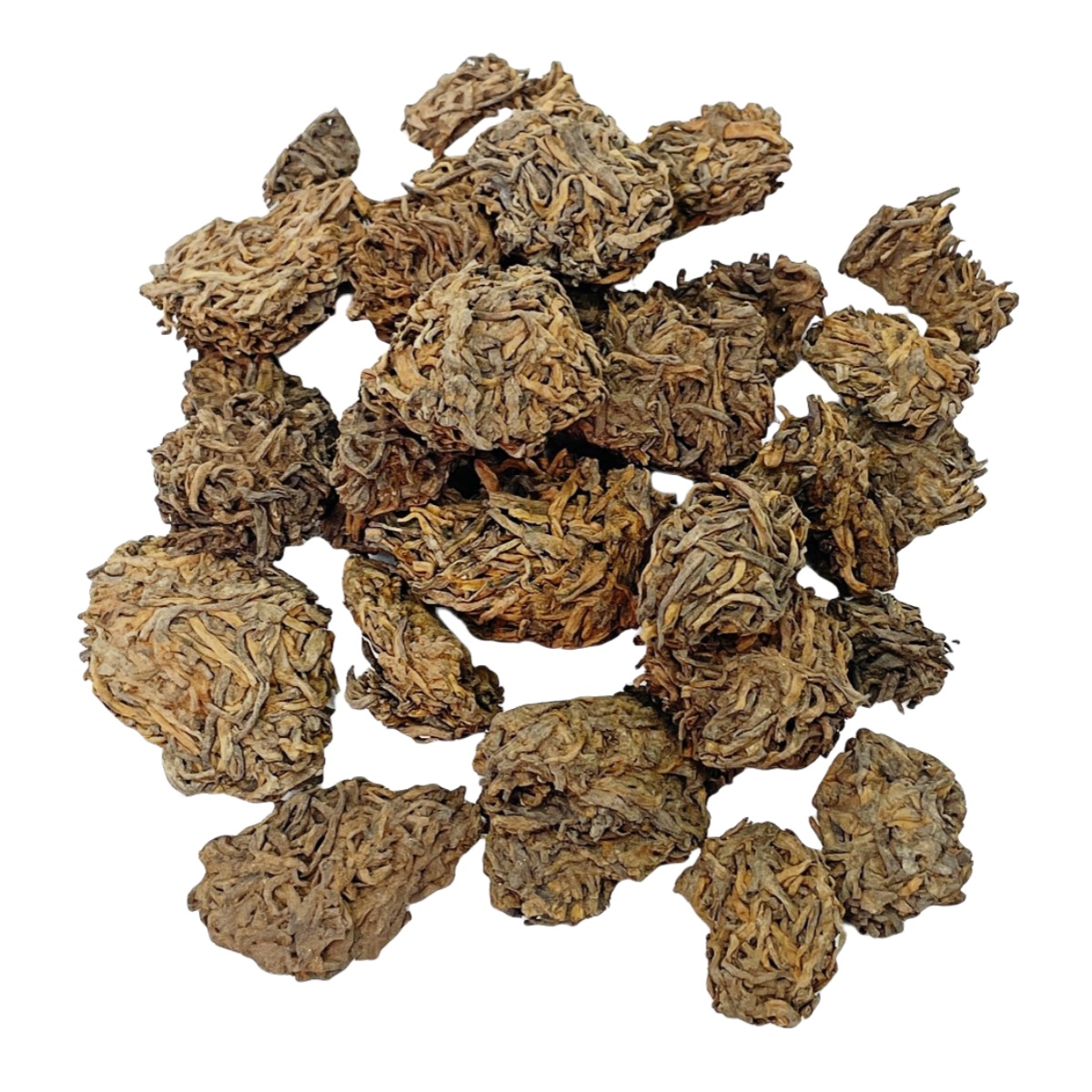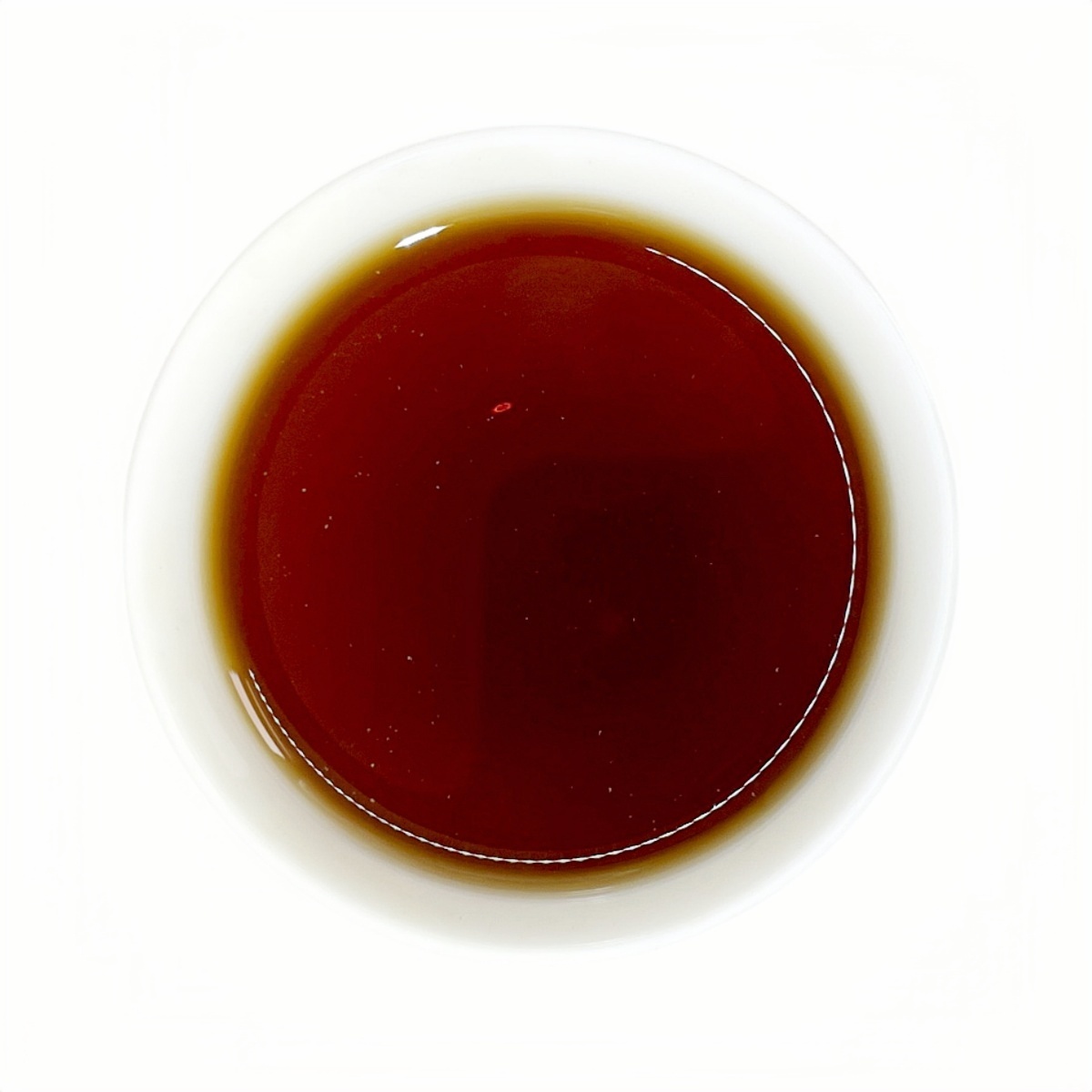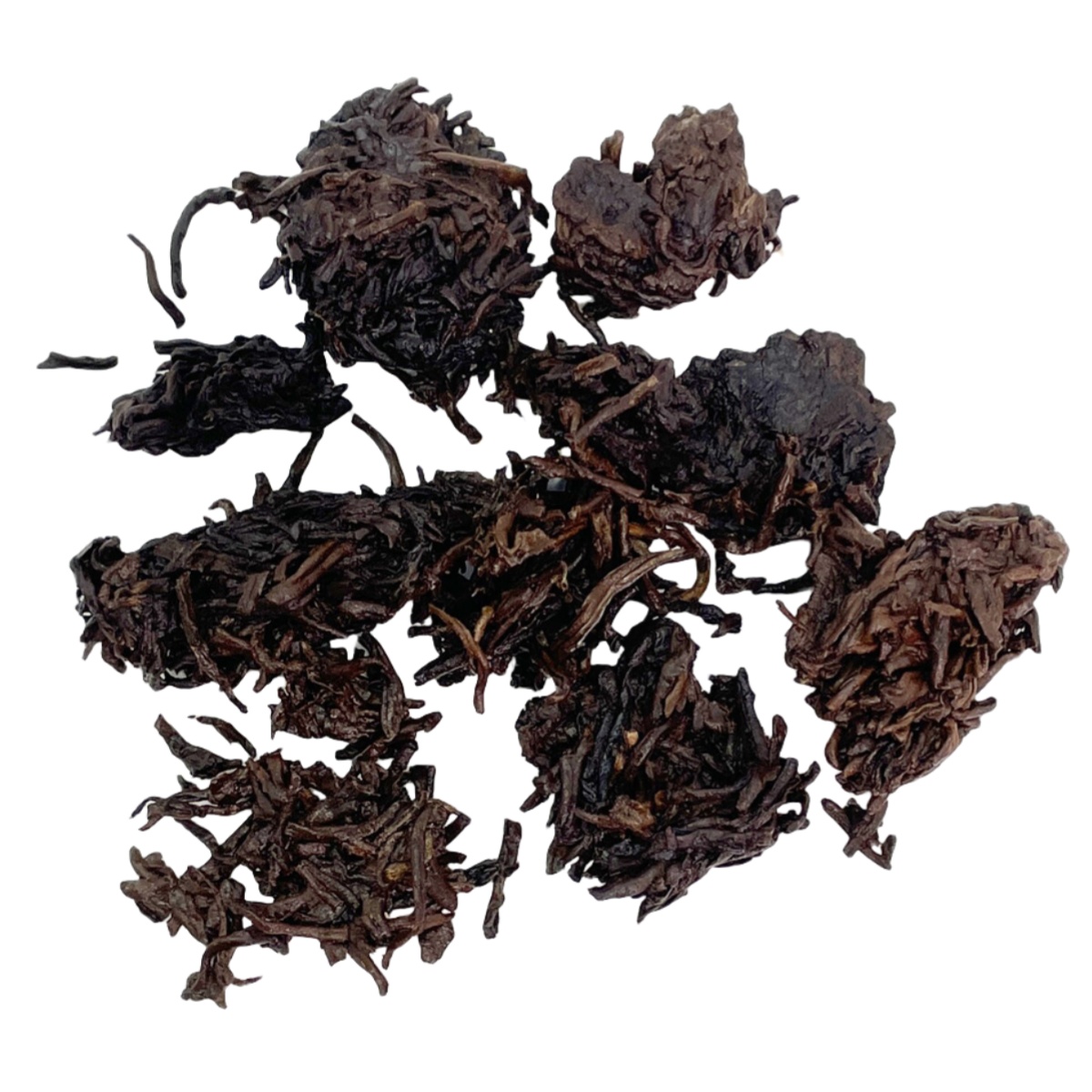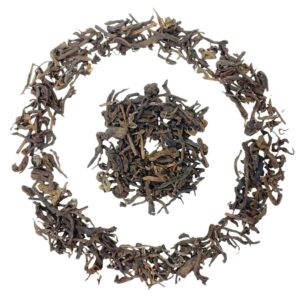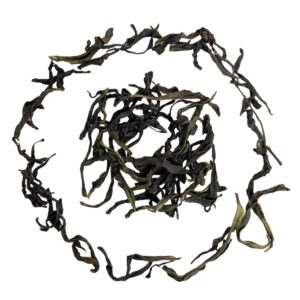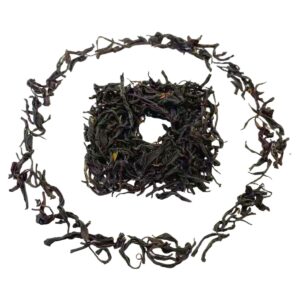Description
Pu’er Tea: An Indispensable Part of China’s 5,000-Year Cultural History
The history of Pu’er tea dates back to the Eastern Han Dynasty (25-220 AD), when ancient inhabitants of Yunnan began harvesting wild tea leaves.
During the Tang, Song, and Yuan dynasties, Pu’er tea became a vital medium for frontier governance through the “Tea-Horse Trade” with Tibet and other regions. In the Yuan Dynasty, Mongolians introduced Pu’er tea to Russia, marking the start of its international journey.
By the Yongzheng era (1729) of the Qing Dynasty, imperial tribute tea fields were established, elevating Pu’er tea to royal tribute status and its golden age. The Qianlong-era plaque “Tribute to the Heavenly Dynasty” affirmed its prestige, while the Tea Horse Road trade flourished, exporting it to Tibet, Southeast Asia, and Europe.
Pu’er tea’s post-fermentation特性 grants it the “more aged, more fragrant” quality. Qing royalty regarded it as “drinkable antique,” and today it symbolizes both consumption and collectible value.
Traditional Chinese medicine credits Pu’er with “aiding digestion and cutting greasiness,” while modern studies confirm its lipid-lowering and antioxidant effects. This health legacy secures its unique role in contemporary tea culture.
The craftsmanship of Pu’er (tribute tea) is a National Intangible Cultural Heritage. In 2022, UNESCO inscribed it on its Representative List of the Intangible Cultural Heritage of Humanity.
“From Byproduct to Treasure: The Birth of Tea Lumps”
- Historical Roots: Born in Yunnan’s 1990s wet-piling fermentation process, tea lumps formed naturally as tightly bound clusters during microbial activity – a serendipitous result of traditional craftsmanship.
- Cultural Symbol: Revered as “tea artifacts,” these nuggets embody the wisdom of ancient tea masters and the patience of time, reflecting China’s millennia-old tea culture.
- Artisan Revival: Once discarded as low-grade material, 90s tea lumps were rediscovered for their intensified flavor, marking a revolution in pu-erh appreciation.

“Why 1990s Tea Lumps? Nature’s Perfect Imperfection”
- Density & Intensity: Tightly packed leaves concentrate flavors, yielding 50% higher polyphenols than loose-leaf pu-erh .
- Double Aging: 30+ years of fermentation + natural oxidation create layered notes of caramelized fig, damp forest, and aged leather.
- Zero Processing: No cutting or blending – each lump is a raw testament to terroir and time.
Brewing Mastery - Gongfu Style: 5g lump in 300ml @100°C – 15+ infusions with evolving complexity.
- Boiling Ritual: Simmer 10g for 10 mins to unlock viscous, medicinal broth.

“The Alchemy of Time: 1990s Fermentation Secrets”
Traditional Wet-Piling
- Natural Clumping: High-pectin tea leaves bond during 60-day fermentation, forming dense nuggets under controlled humidity.
- Microbial Symphony: Dominant Aspergillus and Saccharomyces strains transform tannins into velvety umami.
Post-Fermentation Aging - Oak Cask Influence: Stored in Yunnan’s bamboo-wrapped warehouses, absorbing subtle woody notes over decades.
- Patina of Time: Surface “tea frost” (natural crystalline deposits) signals premium maturation.
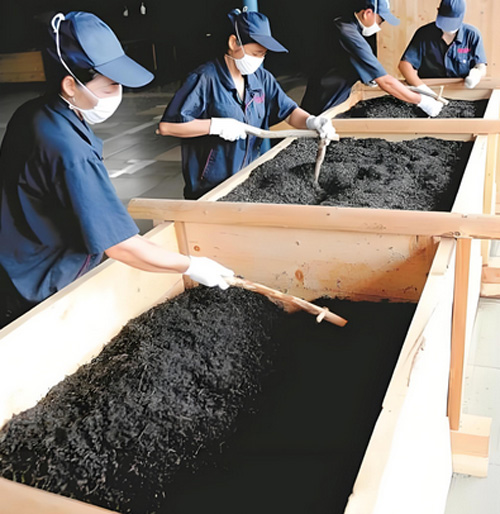
“Gut Guardian + Appreciating Asset”
Wellness Benefits
- Digestive Harmony: 10x probiotics vs. regular pu-erh aid bloating relief.
- Antioxidant Power: 50% higher EGCG content combats free radicals (lab-tested).
- Stress Relief: Theanine promotes alpha-brainwave relaxation.

